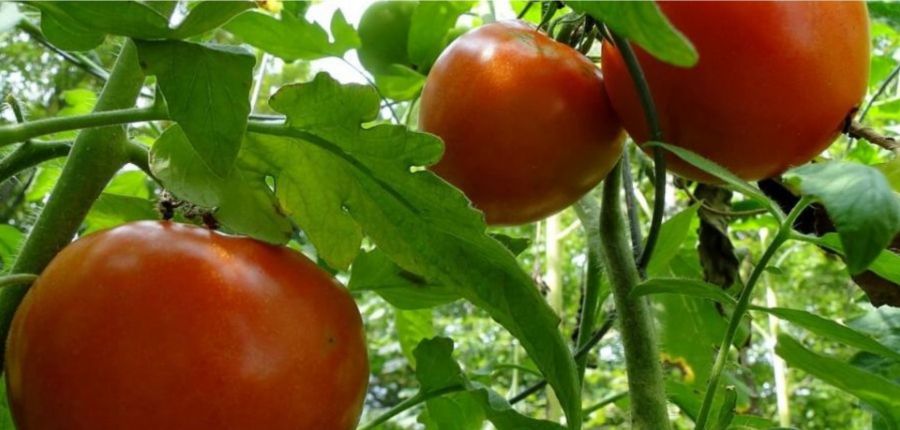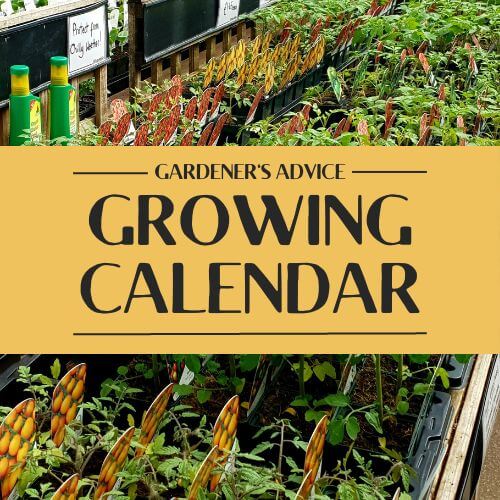How to grow successful tomatoes
Posted By: rocket veg Category: Growing VegThose tiny tomato seeds which you sowed on cold day early January, nurtured as seedlings and watched as they grew into sturdy young plants on your kitchen windowsill, should now be planted out (April) – either in a warm, sheltered spot in your garden, or inside a greenhouse or polytunnel – and putting on steady growth. You may even be lucky enough to have the first signs of fruit in the form of tiny tomatoes at the base of the pale, yellow flowers.
If you aren’t able to grow tomatoes ‘under glass’, don’t despair. If you hold back until the risk of frost has passed, growing tomatoes in the open will be fine, but be sure to choose a sunny, sheltered spot.
Where to grow your tomatoes
Tomatoes require as much sun as possible to develop good fruit, so if you haven’t planted your tomatoes out yet, choose the sunniest spot: a corner of a patio, or in front of a shed or wall where the rays of the sun will beat down for as much of the day as possible. If planting in open ground, your tomatoes will need a sheltered site, protected from strong wind. Tomatoes do really well in containers – the ubiquitous growing bag or any other suitable tub filled with fibrous, moisture-retaining compost – but they are equally at home in a flower bed or greenhouse border. Many years ago, I grew tomatoes very successfully in soil which I sterilised each year with a good soaking of Jeyes Fluid – this in a wonky old lean-to greenhouse which we discovered when we moved into our first house. We had tomatoes galore for several years running!
Whichever method you decide to use, bear in mind that tomato plants need a good depth of compost in which to spread their roots and draw up water and nutrients. For this reason, I add purpose-made plastic rings which I fill with vegetable compost and sit on top of holes cut in the growing bag. When I plant my tomatoes, I aim to sit the root ball of each plant deep in soil as this will encourage roots to grow along the length of the buried stem: more roots = stronger plants = better crop of beautiful fruits!
Support for the growing plants
Tomato plants fall into two categories: vine and bush (which include those for hanging baskets, such as ‘Tumbling Tom’). Apart from watering and regular feeding, bush tomatoes, which generally produce small ‘cherry’ fruits, can be left to their own devices. As the name suggests, vine varieties produce a single stem from which the trusses of fruit develop, so as the tomato plant grows, you will need to pinch out the side shoots, found in the fork between each leaf and stem, to maintain a strong stem.
Make sure you provide your vine tomato plants with sturdy support in the form of a cane or strong twine which can be twisted round the stem of the plant. I use raffia, which is soft but surprisingly strong, to tie the stem of each plant to its cane. If you are growing vine tomatoes indoors, pinch the main tip of the plant out when you have seven trusses of tomatoes – four trusses for plants grown in the open. Keep in mind that ripe tomatoes are heavy and the plants are liable to snap under the weight if not properly supported.
Watering and feeding
Tomato plants must be watered on a very regular basis, daily on sunny days, so if you go away for a few days, make sure a friend can keep the watering regime going. Erratic watering and lack of feed is likely to result in the fruits developing blossom end rot which appears as a black patch on the base of each fruit.
They are greedy plants too, but only start feeding once the first cluster of tiny fruits has formed (the ‘truss’) and then make free with liquid food. Specialist tomato food is readily available, but this is where those of us who produce ‘comfrey tea’ triumph, as this potassium-rich feed is just the ticket for tomatoes (not to mention peppers, cucumbers, squash, aubergines & Co) – and best of all, it’s free!
Harvesting your wonderful crop
All being well, you will be picking your first tomatoes later this month and if you are new to tomato growing, you will be amazed at the fantastic flavour and firm flesh – worlds away from the tomatoes which are sold in shops. If you have any unripe tomatoes at the end of summer, either turn these into chutney, or put them into a cardboard box with a ripe banana which should encourage them to ripen.
Dealing with problems
Tomatoes are subject to various problems, such as blossom end rot, leaf curl and blight – plants growing outdoors especially susceptible to the latter during warm, damp weather. Needless to say, there’s a lot of advice and suitable remedies available in gardening books and numerous websites.
My favourite varieties of tomato
Of all the varieties of tomato that I have grown in recent years, the best performer has been ‘Cuor di Bue’, a dependable Italian version which produces beef-type fruits. This year, I’m also growing another Italian variety, ‘San Marzano’, for its long plum-shaped fruits; ‘Tigerella’ for the medium-sized fruits with delightful red and orange stripes; and a cherry tomato called ‘Sweet Aperitif’.







